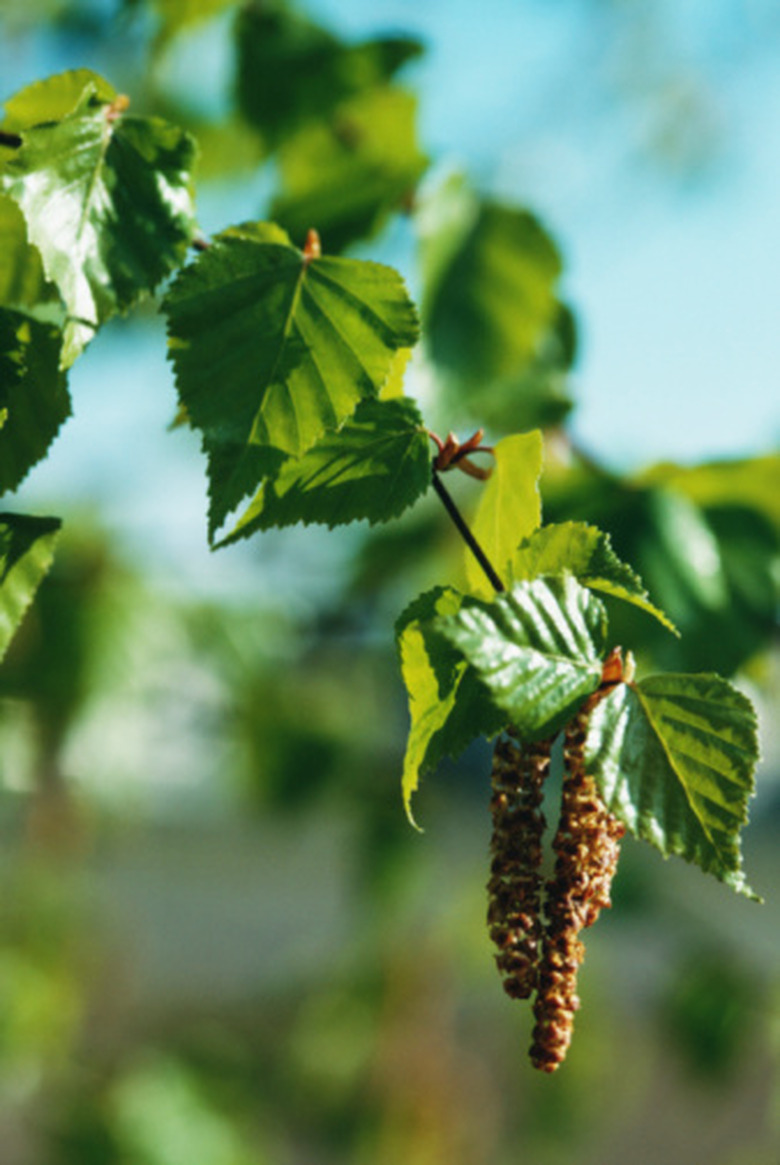When Do Birch Trees Pollinate?
Birches are termed "monoecious," meaning that the trees bear both male and female flowers on the same branch. Closely related to oaks and beech trees, each birch produces sufficient pollen to fertilize its female flowers in the springtime.
Male Flowers
Birch trees (genus Betula) have delicate leaves, papery bark and graceful silhouettes. Flowers appear in catkins. The male flowers — erect staminate catkins producing pollen — appear at summer's end at the tips of long shoots. They remain on the tree until spring pollination.
Female Flowers
Female birch flowers — solitary pistillate catkins — pass the winter enclosed in buds. They appear about the same time as birch leaves, presenting as short catkins of less than 1 inch on short shoots. Each catkin contains three flowers.
- Birches are termed "monoecious," meaning that the trees bear both male and female flowers on the same branch.
- Female birch flowers — solitary pistillate catkins — pass the winter enclosed in buds.
Pollination
In the spring, the male catkins grow and change color. When they are several inches long and a purplish yellow hue, they shed pollen for three to five days. The female flowers become receptive just before the male flowers on the same tree shed pollen.
Birch Trees
Something about a birch tree's dark branches and slim, white trunks stir the imagination. It's not hard to pick a birch out of a lineup. They're known for their pale, papery, peeling bark marked with horizontal lines called lenticels. Paper birch is also called white birch and silver birch. Like water birch, river birch has reddish-brown bark that peels, while white birch's attractions include shining white bark and gracefully drooping branches. These trees grow faster than you might think. They grow best in a spot where the tree's roots are in the shade in the hot afternoons but the canopy still receives sun all day. Look for winding galleries beneath the bark. Another bug that burrows into birches is the birch leafminer. Similarly, aphids can suck the sap from birch leaves but won't kill the tree. Ladybugs are predictors that can rescue your birches from aphids.
- In the spring, the male catkins grow and change color.
